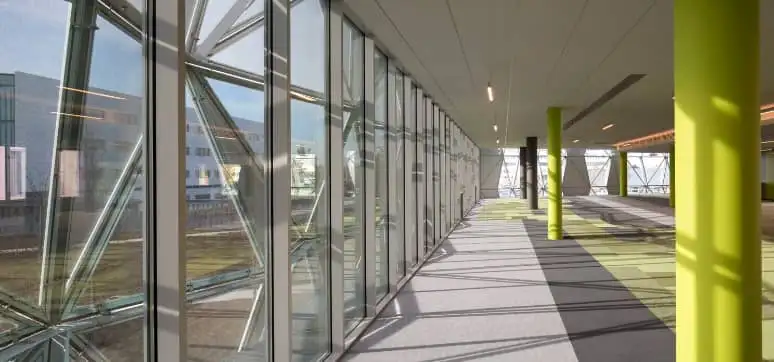The architectural realm is a harmonious blend of aesthetics, functionality, and environmental commitment. Over time, the construction sector has embraced innovations, tackling modern-day challenges.
A groundbreaking trend is the use of textile façades for solar protection in buildings. The FSV 381 and GFM 52 membranes, developed by industry giants like SERGE FERRARI and VERSEIDAG, deliver a plethora of benefits over traditional sun shading methods.
Aesthetic Flexibility
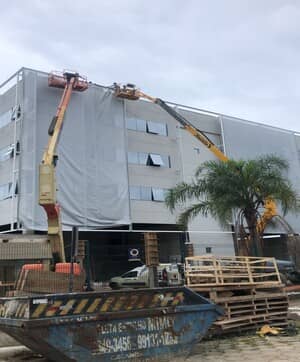 Textile façades open up a large canvas of design possibilities compared to metal meshes and sunshades.
Textile façades open up a large canvas of design possibilities compared to metal meshes and sunshades.
The diverse array of patterns, colours, and textures from leading manufacturers allows architects to seamlessly incorporate solar protection, enhancing a building’s aesthetic value.
Lightweight Solution
While conventional metal solutions serve their purpose, they often come with weight implications, demanding significant structural modifications. In stark contrast, textile façades stand out for their lightweight nature, simplifying installation and trimming down associated costs. Average 3Kg/sqm.
Durability and Longevity
Contrary to first impressions, modern membranes such as FSV 381 and GFM 52 are designed to withstand the test of time. Their resilience against environmental challenges, including UV radiation, promises sustained protection. They offer durability guarantees of 10 to 20 years for PTFE.
Enhanced Visual Comfort
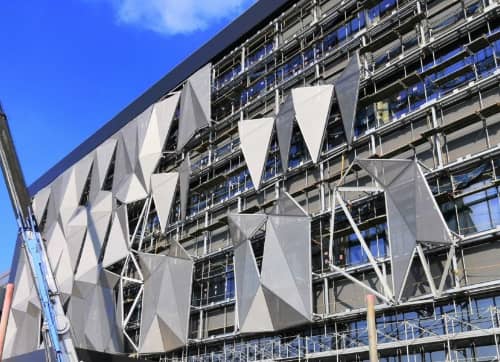 One of the standout attributes of textile façades is the unmatched visual comfort they afford to occupants.
One of the standout attributes of textile façades is the unmatched visual comfort they afford to occupants.
Boasting nearly 100% visual transmission while ensuring 70% occlusion, this balance remains unbeaten by conventional solutions. It results in interiors that ward off excessive sunlight and heat yet remain bathed in natural light, fostering a pleasant ambience.
Improved Energy Efficiency
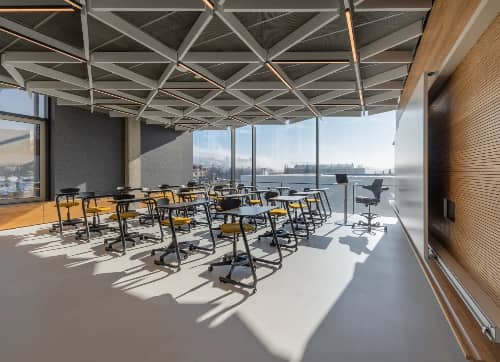 In an era where energy conservation is paramount, textile façades come into their own. They maintain cooler interiors during the peak heat, cutting back on air conditioning reliance and, by extension, energy consumption. Their ability to strike the right chord between blocking unwanted heat and admitting optimal light eradicates the problem of interior glare.
In an era where energy conservation is paramount, textile façades come into their own. They maintain cooler interiors during the peak heat, cutting back on air conditioning reliance and, by extension, energy consumption. Their ability to strike the right chord between blocking unwanted heat and admitting optimal light eradicates the problem of interior glare.
Environmental Benefits
The diminished carbon footprint of textile façades, coupled with their energy conservation benefits, flags them as a sustainable choice.
Cost-Effective
Thanks to state-of-the-art systems like Aero and Solar Skin, the installation of textile façades has become increasingly streamlined. This efficiency, combined with reduced structural interventions, translates to substantial cost savings.
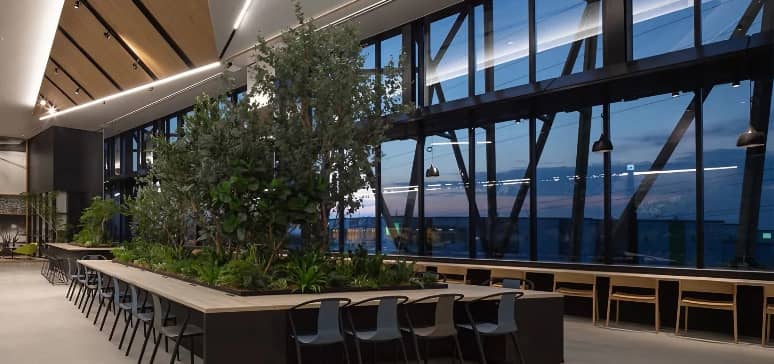
Conclusion
The world of construction is ever-evolving, and the rise of textile façades for solar protection exemplifies this metamorphosis. Beyond their tangible advantages, they embody a shift towards a sustainable future in architectural design.
With many pioneers leading the charge and fostering collaborations across the industry, textile façades are poised to become a mainstay in global architectural landscapes and sunshades.
